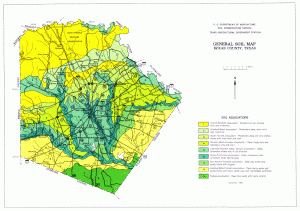San Antonio Express News
GARDENING, Etc.
Sunday, January 22, 2005
By David Rodriguez
If your lawn, vegetable garden or any part of the landscape has not met acceptable expectations this past year consider, for a few well-spent dollars, a soil test. It all starts with the soil, and a good soil is one of the key ingredients in growing predictable quality plants.
Ask yourself these vital questions: Do I have a good soil? Does the soil smell good, taste good or even look good? What?! In truth, this is not the most scientifically recommended approach on identifying the availability of the main nutrients, such as nitrogen, phosphates or potassium.
A soil test will help you come to an unbiased decision on purchasing the correct amounts of soil amendments, additives, supplements, and fertilizers. Bypass all the guess work and confusion. Pick a soil test that meets your specific needs.
It is crucial to know and understand how much nitrogen, phosphorus, potassium and other major, or minor, essential nutrients are in the soil, as well as the pH. For example, most plants such as vegetables, do not abundantly produce in improperly fertilized soils; therefore visible signs of misshaped and/or small size fruit, leaf or blossom shape and color-all are in line with lack of necessary soil nutrient levels.
The report (Routine Analysis) generated from the soil test provides you with the levels of nitrogen, phosphorus, potassium, calcium, and magnesium available to your plants before or after they have been planted. It also indicates the pH (acidity or alkalinity) of the soil. Overall, these are the minimum criteria to properly prepare and fertilize your soil and insure that great harvest this season. If your plants have shown micro-nutrient symptoms, a micro test can also be provided.
Taking a soil sample is very easy. Simply make a hole about 12″ deep at a specific root zone with a soil probe (sharpshooter or spade). At the backside of the hole, cut a ½ inch slice of soil, 1″ thick. Slice the sample 6′ in depth at root level, as evenly as possible for width and thickness. Gently place this core sample in a bucket. Repeat the root-zone core procedures 5 times, randomly spacing throughout the intended growing area.
Mix all of the core samples together, air dry on butcher paper or newspaper, and mail each specific sample to the Soil, Water and Forage Testing Laboratory, 2474 TAMU, College Station, TX 77843-2474.
The Testing Laboratory provides nine unique, but specific soil tests. A basic routine analysis is the most common and costs about $10.00 per sample analyzed. Prices vary with the degree and necessity of details one desires. For more information, contact your local County Extension office at (210) 467-6575. Ask for a “Soil Test” kit. This includes the information, instructions, price list, and envelope for containing your sample.
Results will be mailed to you normally in two to three weeks. Do not wait for spring! Late winter is (i.e. “right now”) the ideal time to start planning and properly preparing for your spring vegetable garden, lawn or landscape. An unbiased and accurate soil test is the first step for success with any plant.
David Rodriguez, County Extension Agent-Horticulture, Bexar County. For more information, call (210) 467-6575 or visit our County Extension website at http://bexar-tx.tamu.edu

